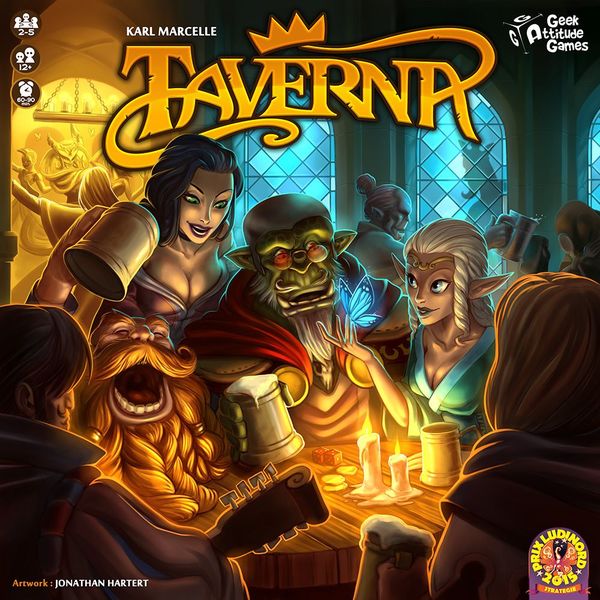Taverna (2015) Board Game
Taverna is a board game released in 2015, designed by Karl Marcelle and published by Games Factory Publishing. Set in a fantasy medieval world, players take on the role of tavern owners competing to attract the most customers to their establishments. With a mix of worker placement, area majority/influence, and open drafting mechanics, Taverna offers a unique gaming experience for 2-5 players.
Game Components of Taverna
How To Setup Taverna
To set up Taverna, start by placing the board in the center of the table, choosing the side appropriate for the number of players. Each player receives 15 coins, 5 property deed tokens, and 5 score tokens in their chosen color. Players place one score token on the city’s entrance and one on each of the four people tracks’ starting positions. The player with the most recent birthday goes first. Guild tokens and customer tiles are placed next to the board. Royal favour tiles are shuffled and one is placed face up on each of the five spaces around the castle. One privilege token is placed on each tavern, and dignitary figures are randomly placed in the small taverns. Each player is dealt three spell cards, and the remaining cards form the spell draw pile. Customer cards are shuffled and four are dealt face up to create the available customer track, with the first card determining the King’s preferred race.
Gameplay Mechanics and Game Objective
Mechanics
Game Objective
Player Experience
Playing Taverna involves strategic decision-making to maximize benefits from customer placements, tavern ownership, and the use of dignitaries and royal favors. The game requires a balance between short-term gains and long-term strategies, especially in progressing on the people tracks and utilizing the unique abilities of the dignitaries. However, the game can become complex due to the numerous options and benefits available, leading to downtime and frequent rule consultations.
Pros
Cons
Personal Thoughts on Taverna
Taverna is ideal for fans of worker placement and area control games who enjoy deep strategic gameplay. It is suited for players who appreciate managing multiple resources and benefits, and who are willing to invest time in understanding the complex rules and mechanics. However, it may not be the best fit for those seeking high player interaction or a quick, simple gaming experience. With its nuanced gameplay and multi-layered strategy, Taverna offers a rich and challenging experience for the right audience.
We are supported by our audience. When you purchase through links on our site, we may earn an affiliate commission, at no extra cost for you. Learn more.

